Big Up
This is at the heart of our mission – credit where credit’s due. We want to celebrate successes, share brilliance and champion ingenuity at every level. Create regular time in your team meetings, start an internal recognition scheme and tell the world about the great people you work with. Get in touch if you’d like to blow your own or agency trumpet in one of our case studies.
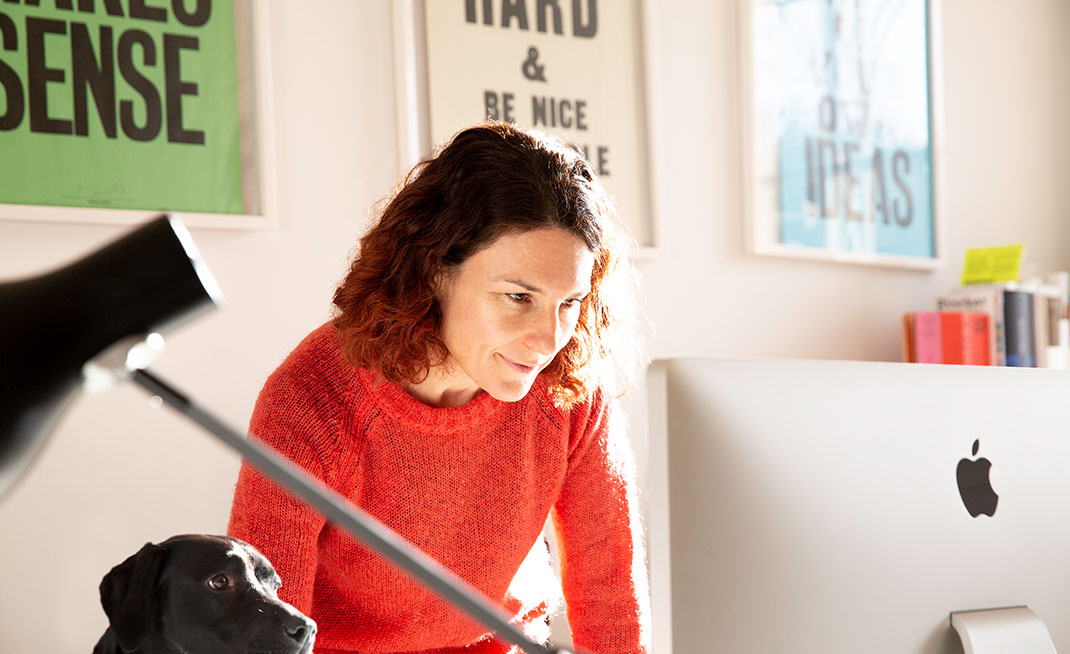
Fable
Jodie Inkson, Creative Director at Fable, shares her thoughts on being a women in a design leadership role.
Read More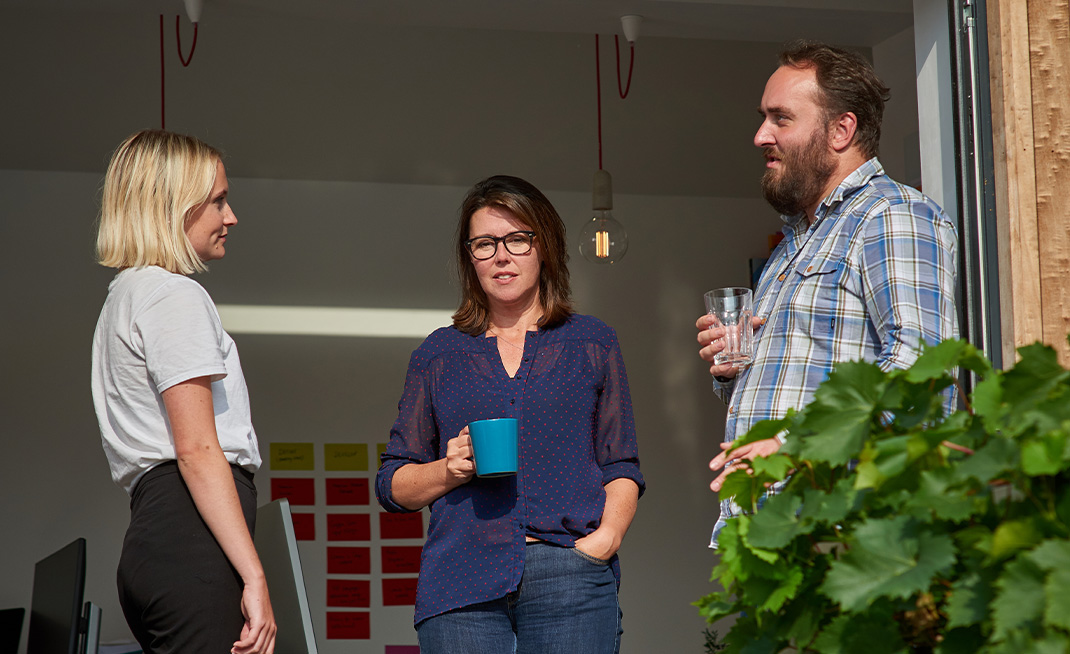
Touchpoint Design
Female empowerment and male/female equity is pretty baked-in at Touchpoint Design.
Read More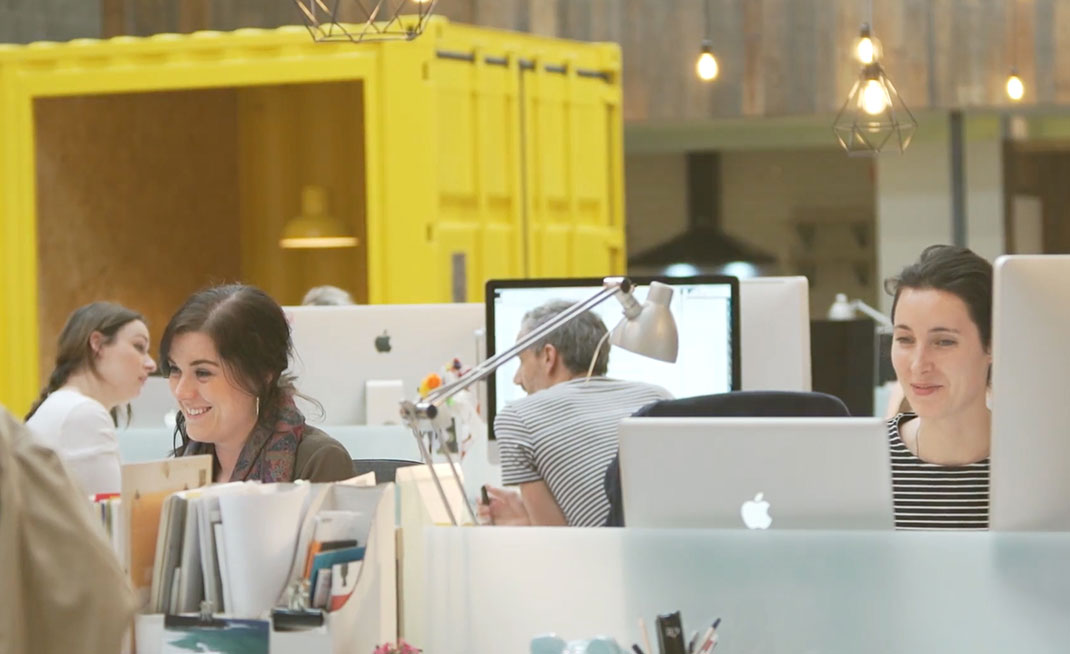
Home
80% of our leadership team are female.
Read More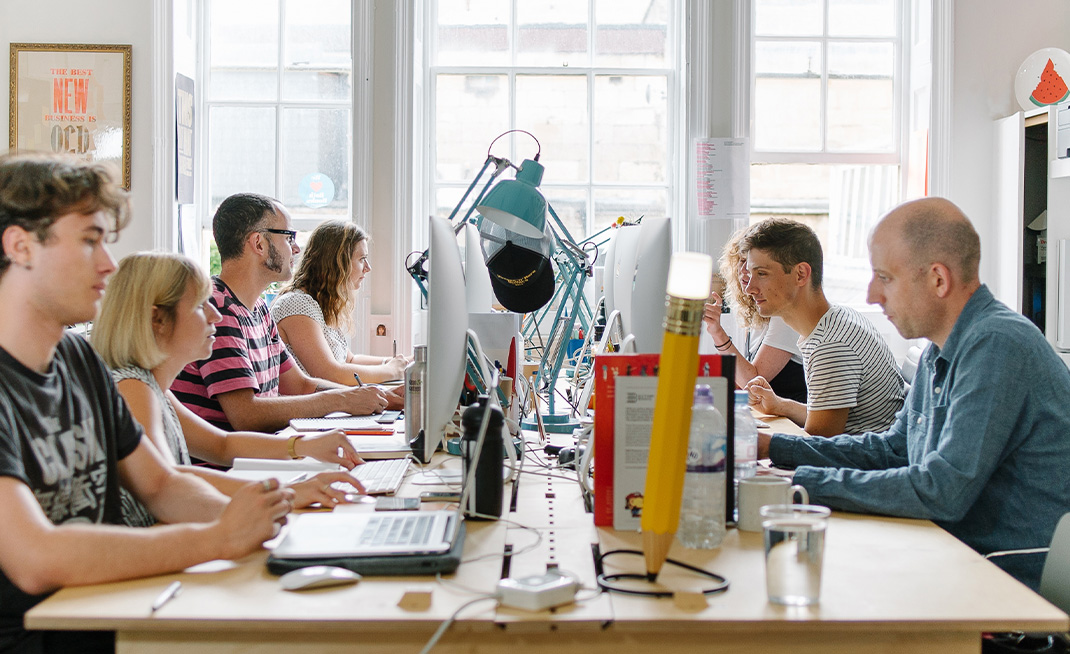
Supple Studio
Learning and development is just part of how we do things at Supple.
Read More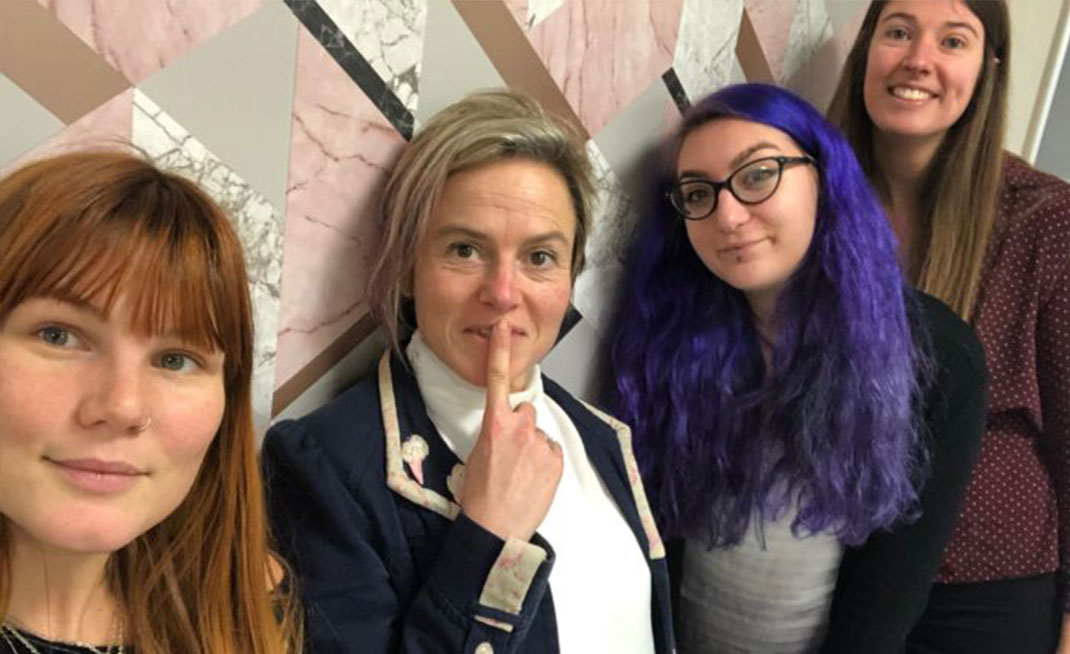
OggaDoon
Equality of talent, not qualifications or demographics.
Read More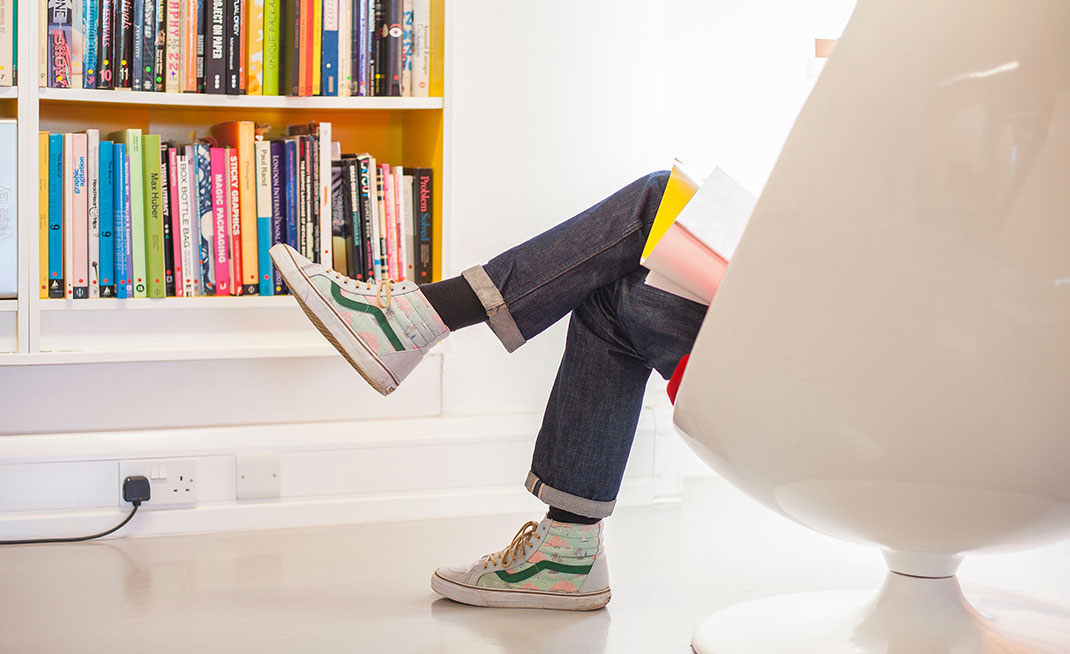
Taxi Studio
We have a good balance of gender at Taxi Studio (we’re currently 59% female and 41% male).
Read More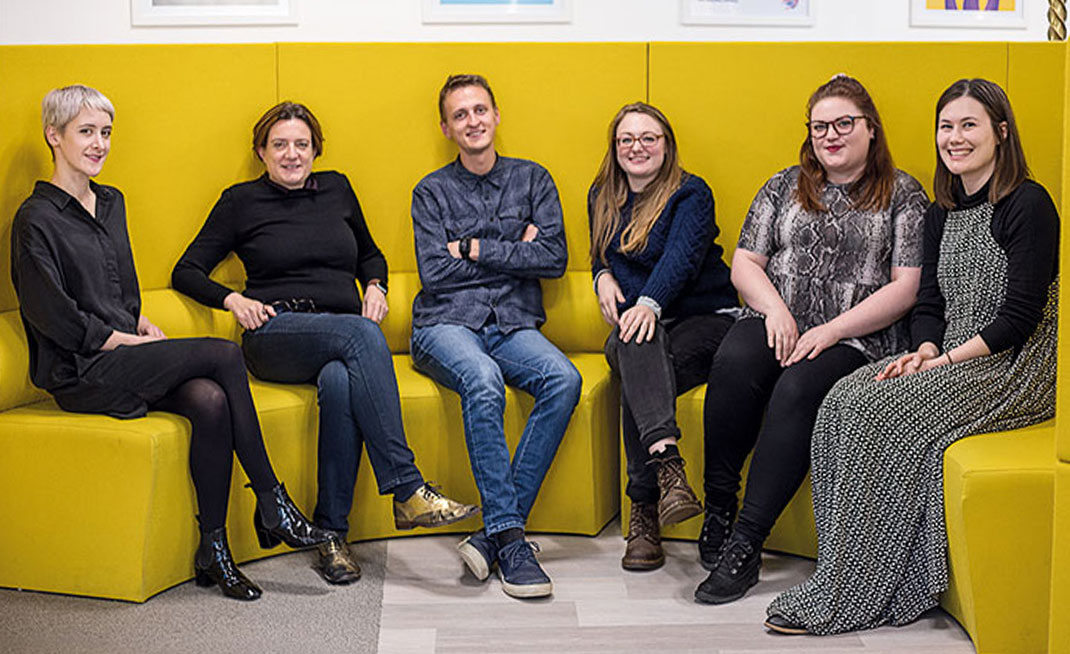
Mr B and Friends
Our diversity team has just marked a year of promoting equal opportunities within the creative industry.
Read More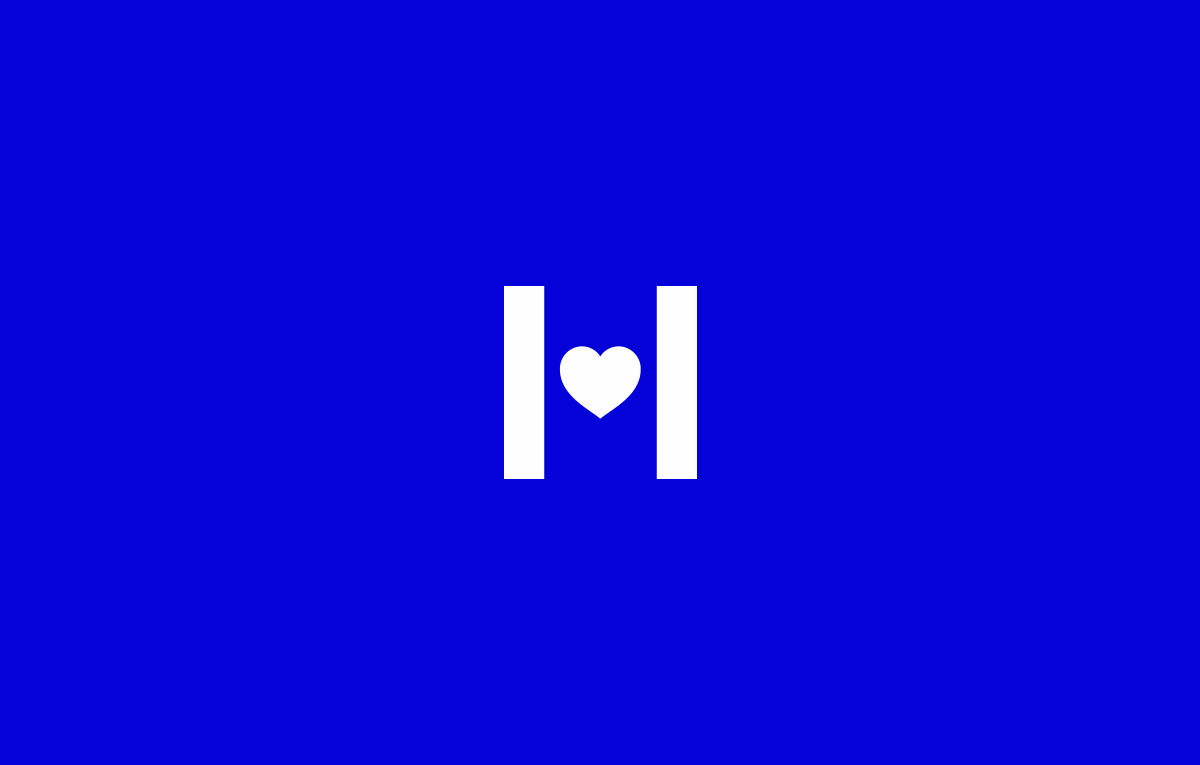
HALO
A culture of trust and empowerment.
Read More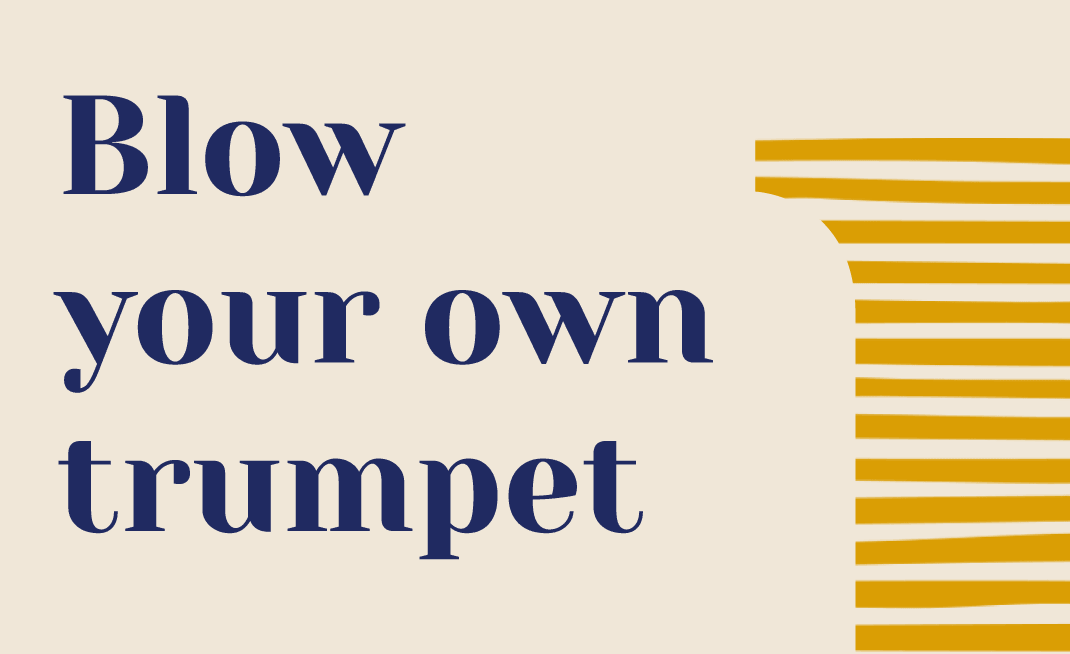
How does your agency support women?
Read More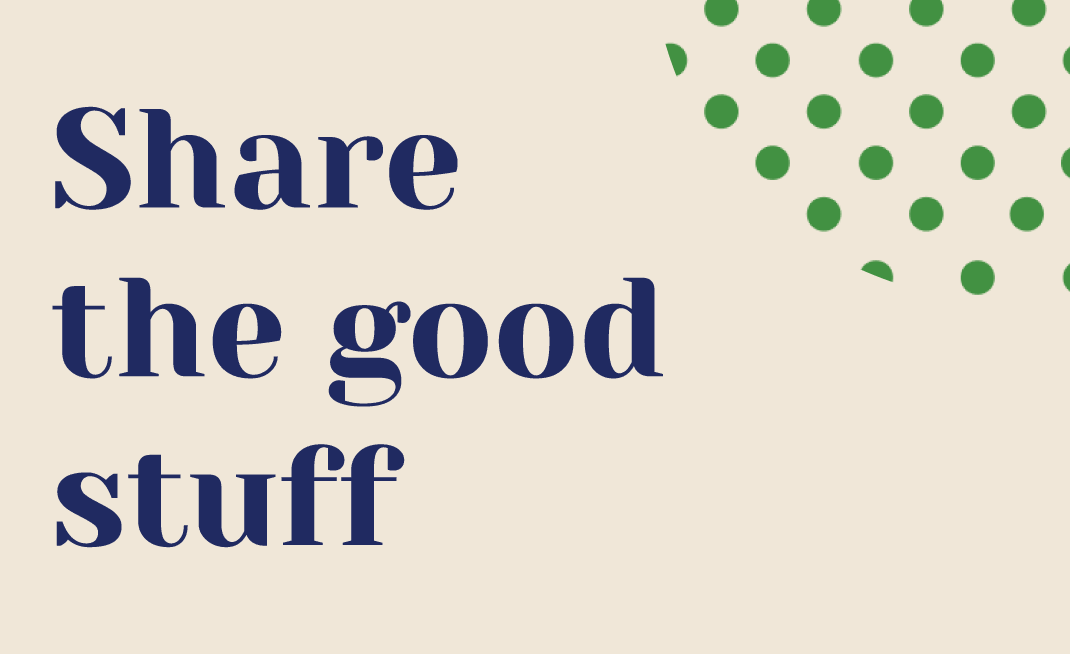
How do you drive equality in your agency?
Read More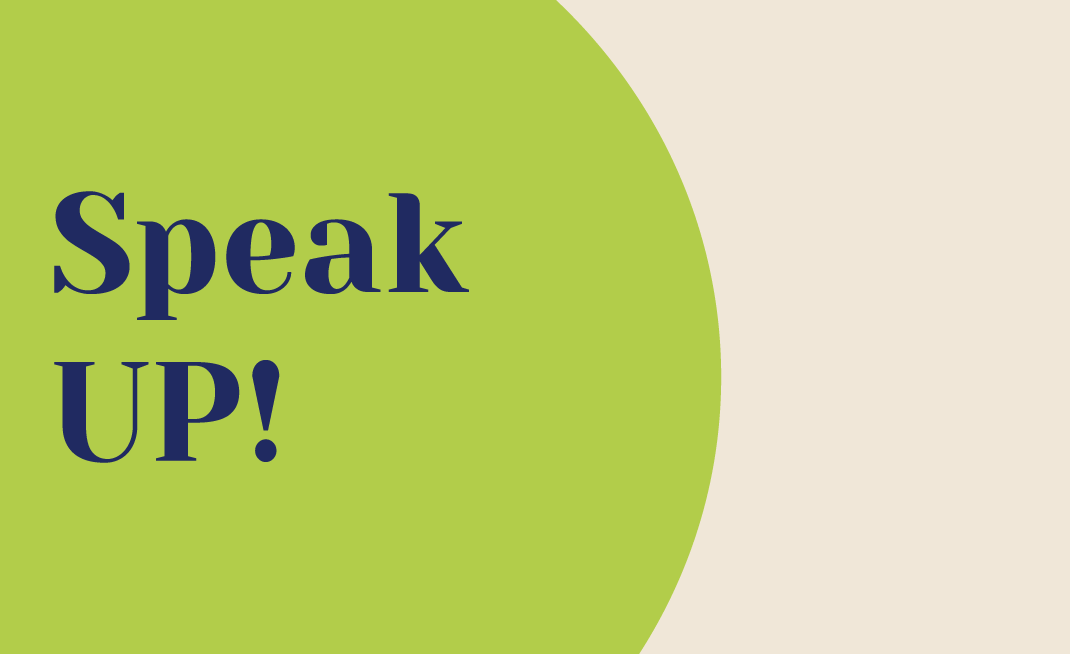
How does your agency empower their team?
Read MoreOnwards and upwards
I’m a Creative Director and agency founder who also happens to be female. I say ‘happens’, as if I were a passive passenger in the process. Someone who just ended up in this role rather than someone who made a series of conscious choices – and who resolutely refused to conform to expectations.
When I started out as a designer in London in the mid-90s, I was working in a very male-dominated environment. There were few female designers and even fewer female Creative Directors. The balance shifted slightly when I moved to Bristol in the mid-noughties, with a few more female designers, but there was still a distinct lack of female CDs and female business owners.
Squeezing my way into this disproportionately male world was something I was determined to do. I loved design and I wasn’t going to let an extra X chromosome stand in my way. I also wanted to do things differently – in terms of design and in terms of creating an open, inclusive workspace where ideas could flow and flourish – regardless of gender. It was one of the reasons I set up Fable, then called Wire Sky, back in 2003.
People-friendly
Since being asked to contribute to the UP initiative, I’ve been trying to work out exactly what it is that we do here at Fable that enables women to flourish. And I’ve really struggled. I think partly it’s because it’s never occurred to me that as a woman I shouldn’t be able to occupy the same space as a man. So, when I Iook at my, as it happens, female-heavy team, I see them as thinkers, designers, writers and film makers, strategists, planners and project managers, each with their own way of seeing the world. We value one another for the skills and unique qualities that we each bring to Fable. We don’t clamber for our voice to be heard, we work as a team, sharing accountability and sharing recognition and pride.
In many ways our working environment at Fable is more akin to a family. We understand that we’re all living very different lives. I think that recognising and accommodating people’s different needs makes for a very inclusive and female-friendly workplace. There are the small things we do like putting school holidays in the team calendar so that everyone can plan. And then there’s the bigger things like creating a supportive atmosphere where people can be honest, so if someone needs to come in late so they can go to their child’s Christmas play, they can.
Family-friendly
It’s not unusual for me to rock up to the studio covered in glitter from carrying some huge cardboard creation that my five-year-old wants to take into school. So I totally get the juggling work and family thing. It was a choice I made early on. I wanted kids and I absolutely wanted to hold on to the career that I was determinedly carving out. And yes, there were some crazy days. I remember four years after founding Fable, taking my baby daughter, Coco, into work with me. Luckily, she was pretty contented and let me get on with things. Fast forward to now and she’s a twelve-year-old wannabe designer. And if there’s one thing I’ve instilled in her – and will instil into my younger daughter and son – it’s that if you’re prepared to work fiendishly hard you can do anything you want. You should never let society’s gender-biased prejudices stand in your way.
As for my team, I’d like to think that things won’t be as difficult for them as when I started out. I’m determined that they won’t have to face the same challenges or have to make the same unrealistic choices. I absolutely believe that with the right work structure – and the right support around you, you can have it all. If the passion and enthusiasm is there, I’d like to think we can work anything out.
Changing our thinking
I also hope that, by virtue of what I’ve achieved, I can inspire women to see that it is possible to thrive in our industry. Yet even as I write this, I’m aware of the irony. That by citing female role models as evidence of female success, we’re linking achievement to gender. And that has to stop.
If we’re to change the creative landscape – to redress the appalling male-female imbalance – we need to start treating people differently. To treat people as individuals with unique differences not as people who are different by virtue of them being men or women.
While I’m glad to see that things are a little more balanced than when I started my career, we’ve still got a long way to go. And I look forward to being part of the journey.
Female empowerment and male/female equity is pretty baked in at Touchpoint Design, simply by virtue of our gender mix, small team and female ownership. In essence, a female designer working with a female owner/creative director is like having your own on-tap mentor and personal champion. So what does that mentorship look like?
Respect is a value we talk about a lot, internally within the team as well as externally with clients, suppliers and associates. Thankfully we rarely encounter problems, and when we do we’re quick to frame them within the value of unblinking mutual respect.
Personal confidence can be difficult for all of us, but in particular for some younger women. We encourage all team members to speak up in meetings and presentations. We are a small agency so we don’t have account handlers: we start to build confidence by giving individuals responsibility for hand-picked ’safe’ clients, rather than being pushed in at the deep end with more challenging clients. And we are quick to offer support when issues arise.
Thriving creatively is key to any good design agency culture. As part of our formal staff reviews we list ways we can create the right environment for generating creative ideas and importantly, learning how to articulate those ideas. We put together an action list of areas for growth – this might be anything from pursuing a passion project to training in a new skill set. When speaking with clients we name the person behind the successful idea, giving credit where credit’s due.
We encourage community involvement, actively participating in portfolio reviews and other graduate events. Hearing the sound of your own voice when speaking with graduates at the start of their career can benefit the designer as much as the graduate.
Lastly, business confidence. This one tackles the crux of the issue we are facing as an industry – the shocking lack of representation at senior leadership level. In the studio we talk often and openly about the business, financial decisions, strategy and frustrations. Creative confidence is one side of the coin, but in order to progress to more senior roles in the future, we need to give our staff the knowledge and framework that enables them to understand the intricacies of running a design agency: the challenges and risks as well as the opportunities. Understanding the business of running an agency will give staff the confidence and voice to be heard on the journey up the ladder – whether at Touchpoint, another agency or maybe in the context of their own studio.
How we now do it at Home.
We all feel it – we’ve had to adapt, change and become more resilient as our 9 to 5s are no longer work as we knew it. The days of all coming together in person may be a distant memory for now, but what’s important to us is keeping our culture alive – being there for one another, supporting and cheering each other on.
That’s one thing that takes pride of place at Home – our people. In the same way as we put employees at the heart of everything we do for our clients, we do the same with our Homies – our inspiring and talented team is testament to this. Many of our Homies began their journey here in more junior roles, which over the years have developed into either senior or leadership positions. It seems to be the Homie way. Plus, a high percentage of these roles are held by women including Senior Designer, Design Director, Creative Director and Founder. In fact, over 80% of our leadership team are female.
We are strong advocates for supporting women in design. We’re proud to say our culture and team is built solely on talent – not gender or background. And whilst we strive to address, disrupt and challenge stereotypes, we know there is still more we can do and more we can learn about the imbalances. Everyone at Home (regardless of role) has the autonomy to choose their own path, own their decisions, and shape their career, knowing that they are always fully supported. There are no set rules. We recognise that all talent must be nurtured and sometimes people might need a little nudge to find their voice – that’s why we believe everyone around you should be your mentor as we have heaps to learn from one another.
Building a collaborative and open culture is good for us all. An important part of everyone’s role is being able to give and receive constructive feedback, so we aim to empower even our most junior members of the team with the skills to do this. Not just on work, but also behaviour. Every Homie has taken part in specific training to understand the science behind feedback, including when and how to deliver it. Learning how to do this in your own style through profiling allows us to bring out the best in each other, day in and day out.
So, just what draws us to work every day and back the next? It’s different for everyone, but we know that having the freedom to be yourself is key to being truly happy. If you can find joy in what you do, everything else should slot into place.
And we know joy arises from belonging, that’s why on day one all new starters enjoy a team breakfast along with a welcome book signed by everyone, and a plan for the first week ensuring they get to know the different people across the business. Usually a home-baked cake made by the last Homie to join would also be presented – a tradition we can’t wait to get back to! But our love of food doesn’t stop there. Pre-lockdown we were famous for Wednesday lunches, where two Homies were given a set budget to rustle up two courses for the whole company, plus anyone else lucky enough to be visiting! It’s rituals like these that keep us connected, so in their absence we gave everyone a surprise Uber Eats voucher when lockdown 2.0 hit.
Bonding as a team is important to us, so we make sure Fridays are for sharing with ‘homestretch’. We meet as a whole company over Zoom to review the week, show anything cool we’ve been working on, and share anything inspiring we’ve seen. It’s an informal space where everyone’s voice is heard and valued.
Being a Homie is as much about wanting to fulfil your own potential as it is about being supported to do so. We understand that everyone’s different and that individuals need individual support. And that’s our approach – people spending time with people (even if virtually), finding out what makes them tick and how to develop them, along with them finding out how they can develop themselves. To make sure we’re spending quality time talking about the important stuff, we’ve scrapped the traditional annual appraisals for quarterly catch-ups that take on a more creative and interactive format. Being visual people, the new approach is much more rewarding when it comes to chatting about progress, thoughts on development and capturing objectives.
One size doesn’t fit all, and neither should it. Everyone’s on their own journey, and for as little or as long as they’re at Home, we aim to enrich every individual experience, so they get to realise the best possible them.
Home really is a place full of opportunity – you just need to be hungry enough to take it.
Learning and development is just part of how we do things at Supple. Everyone is encouraged to develop and challenge themselves through training, learning and experiences – whether that’s D&AD, mentoring schemes, software training or through talks and public speaking.
Probably the best example of this is one of our ex-designers, Katie Cadwell. Katie’s moved to Sydney to work at DesignStudio and is smashing it over there. She was our first employee here at Supple and I liked her graduate portfolio as it had some promising animation and video work. Over the five years she was with us, I encouraged her to create animations and logo stings for branding projects, regardless of whether there was budget or not. She also did some intensive one-to-one training with a local animation studio and the result was she became an excellent animator. It allowed her to flex her muscles and become our resident motion expert and, at the same time, became an integral part of our branding process and offer. Before she left, she passed her knowledge onto the rest of the team and now everyone (except me cos I’m old and too busy) have skilled up on After Effects.
Similarly, Sheri here is a natural illustrator, so any projects that come our way that need an illustration element usually go to her. It’s enabled her to develop and experiment as an illustrator and her recent illustrated brand, The Lighthouse, for the NSPCC won Gold at the Transform Awards – proof that she’s gotten bloody good. She’s also just opened her own Etsy page selling prints of her personal illustration work. Hopefully the encouragement and support she gets here at Supple has helped lead to this.
We don’t formally mentor each other, but as a small agency it’s a constant part of our process. Through a culture of sharing and iterative design, we’re always sharing techniques and helping each other to do better work. We also collaborate on most projects, so no one is ever working in isolation (although during COVID lockdown that wasn’t quite the case). I also recognise that mentoring and learning works both ways – I’m constantly learning from the younger designers here.
In terms of gender equality, I have to say I don’t really think of my team as ‘female’ or ‘male’ designers. They’re just designers. And they’re bloody good at what they do and that’s why they work here. I have never employed anyone based on gender – only talent and personality.
I think what’s important is flexibility. One of our Design Directors, Becks, is a mum, and her husband Phil works here as Design Director too, so they both work four days a week and share childcare. I’m flexible about which days she works and also happy for them both to work flexible hours so they can manage the nursery drop-offs and pick-ups. She was already a mum when she joined Supple. And that didn’t sway my decision to employ her – she was simply the best and most experienced designer available at that point by a country mile. As a parent myself, I work four days a week in order to have one day a week where I can be a stay at home dad, so I’m open to this approach for male and female designers equally. I’ve been doing it for nearly ten years – if anything, it’s made me more productive rather than less.
Everyone is free to come in a little early and leave a little early or vice versa. I’m of the opinion that as long as you get your work done, you can work the hours that suit you. But having said that most of our clients work traditional 9-5 kind of hours and we need to be available to them within those hours. So in general we start around 9.30am and leave at 6pm. Late nights aren’t a thing here – definitely not part of the culture.
Across the team everyone is given the chance to develop through shared responsibility and the opportunity to work directly with clients. Unlike at a bigger agency, everyone gets hands-on experience of dealing with clients, so anyone can present work, pick up a brief or help cost a project. It means we are all constantly learning about the business and project management side of running design projects, as well as the design bit. At Supple, we all wear many hats and that makes us more rounded creatives.
We’re small so it’s rare that work goes out the door without everyone seeing it or having a hand in it. We do occasionally have super busy periods where perhaps we don’t have time to share ideas as much as usual. Usually once the busy spot ends we try to share any work that people didn’t get to see. In general everything that’s being worked on goes on the wall, so even those who aren’t working on a project get a chance to comment and chip in. It makes for better work.
We also have a production meeting every Monday morning where we sit together and talk about the status of all live projects: it’s a chance for anyone struggling to ask for help or opinions. Plus it means everyone knows what everyone else is doing, and it’s a chance to talk about any new business we’re pitching for. And more importantly find out what everyone got up to at the weekend.
I’m a fairly light-touch kind of Creative Director I think (hope), so I give people as much autonomy as possible, lending support and direction when they ask for it. I like my team to feel a sense of ownership with projects. So my main way of supporting them is providing a relaxed, low ego environment where they feel they can be creative without too many boundaries. A place where no idea is too weird or too off-brief and where everyone has a chance to voice their opinion and defend their work. The space says it all – we work in an open space with no real hierarchy. I don’t sit in a Mad Men-style Creative Director’s office drinking whisky, so everyone knows what’s going on as we’re constantly chatting and gathering around each other’s screens. This was the bit we missed most during lockdown – we managed to sort of do it through Zoom and Miro Boards. But being back in the studio with most of the team has really made the work better.
When it comes to celebrating successes, although design awards aren’t the be all and end all, I think they’re a nice pat on the back for the design team. so every year we put aside a modest awards budget. Everyone has won something over the last few years, so it gives a sense of personal achievement as well as recognition of our work from the wider design community. It also boosts morale and gives us a reason to celebrate the work we’ve created together whilst attracting new, younger talent too.
I also try to pay everyone fairly based on how good they are rather than how long they’ve been in the game. Katie was made senior designer a year before she left, after only four years in the industry. In a bigger agency they’d probably wait another couple years at least for that kind of a promotion. I’m of the opinion that you should be rewarded for how good you are now, rather than how long you’ve been doing your job.
We’re small so there’s no HR department or set of policies. For me it’s about fairness. I treat the whole team the same – well. We’re like a little family unit here, so we all look after each other. Before anyone joins the team, they need to prove they’re the right fit personality-wise (this usually involves the whole team and a trip to the pub). We’re looking for talent without ego, a desire to push things and do the best work but without being competitive. If a person fits the bill then their gender, colour of their skin, or sexuality don’t matter to me. What matters is the work and the personality fit.
Equality of talent, not qualifications or demographics
Equality. It’s something that, here at OggaDoon, we strongly believe in – which is why we don’t require a degree from applicants, we completely ignore all demographic data, and always hire the best person for the job.
What has that left us with? A team of dynamic, highly capable, highly driven people who deliver excellence.
We’re also (at the time of writing) all women.
Although this has led to tongue-in-cheek claims of sexism, we work hard as a boutique agency to ensure we never hire based on say so, similarity to interviewer, or just ‘a feeling’.
The OggaDoon process
When we advertise a job or an apprenticeship, the description for the role is run through some free software that assesses the phrasing for gendered or biased language. You can try it yourself here for free.
For many of us in the team, words are our bread and butter – but we’re conscious of our biases, and those we don’t even know about. Using a tool like this ensures we keep our job descriptions open.
Next, we receive applications. This is managed typically by one person, who creates a matrix based on the job description and ranks each candidate on the skills and experience we’re looking for – without any demographic data.
None. No reference to names, ages, genders, disabilities, ethnicity, race or nationality.
They are just not important to us. They don’t make someone better or worse at the job, so we don’t include that information on the matrix. It is then sent to another team member – and crucially, one who has not seen the job applications. Based on the rankings for specific skills and qualities, they pick the top few to interview.
The interviews are carried out by two people, and crucially, neither will know which interviewee relates to which ranking on the matrix.
That’s no longer important. We know that everyone in front of us can do the job. What we’re interested in now are the softer skills such as communication, professionalism, positivity and response under pressure. How do they react with a difficult question? How have they overcome challenges in workplaces?
Put simply, we know the important data of a person – it’s the story of the person we want to hear.
It isn’t complicated, and it works
We don’t have a HR team, and no one has the sole responsibility of hiring.
By sharing the load between us and doing it in a focused way that ignores qualifications and demographics, but focuses on what has actually been done, we find outstanding candidates.
So, no matter the size of your business, you can start to recruit without unconscious bias. It really will build a strong, creative, dynamic, and diverse team.
Love the OggaDoon way of life? Get in touch with the team.
We have a good balance of gender at Taxi Studio (we’re currently 59% female and 41% male) and we always do our best to provide the best conditions for all. We are aware that to give everyone equal opportunity to succeed means understanding and appreciating that each one of our employees needs different inputs – one size doesn’t fit all, so one input doesn’t either.
At our size, we have to strike the balance between meeting ad-hoc requirements with policies and procedures that are fair to all. This case study shares just two of the things that we have in place to support everyone at Taxi Studio: a system that allows everyone to take responsibility for their personal growth and development and another that supports flexible working.
The fundamental and simplest thing that we try to practice throughout everything we do at Taxi (which sounds silly to have to say out loud, but it is often easy to forget) is basic transactional analysis – if you treat people like adults they will respond like adults. And it works.
We’ve approached this as a real ‘how-to’ (it’s certainly not the only how-to out there but it works well for us). We’re sharing the nuts and bolts of the processes that we have in place and the software we use to do it.
An employer is a career guardian
People come to us with awesome creative instincts and an enthusiasm to embrace what we’re all about. They leave with a bunch of brilliant experiences; confident in the knowledge they’ve grown ten feet taller and been part of a pretty special culture.
Every one of our superstars has a Team Leader and a Mentor and access to our in-house coach.
A Team Leader’s support is focused on personal development and career ambitions, setting development objectives for each quarter and reviewing progress. Mentors act as more of an inspirational ‘buddy’, providing advice, guidance, encouragement and pastoral care.
Coaching enables protected thinking time away from day-to-day commitments and team dynamics, to help the individual look up and think about the bigger picture and broader personal goals.
We all have an annual individual training and development budget, and you and your Team Leader navigate the best courses, training sessions and inspiration that is right for you and matches your goals and aspirations. These can be as varied as a D&AD training session on creative copywriting to a course on improv theatre – surprising how good this is for building confidence in meetings or skills at presenting and public speaking!
Like all good relationships, it’s a matter of give and take.
The creative industries have always been punctuated with the occasional long days and late nights. No matter how well your time and resources are managed there is always that unbelievable new business opportunity attached to a very short deadline that throws out the working week. So, our flexible working policy is a best-laid plan that supports each of our employee’s different needs whilst still being able to deliver excellent work.
Most people work a five-day week but 24% have opted for flexible working with patterns ranging from four-day weeks, finishing at lunchtimes and working remotely. This level of flexibility is especially important in supporting parents returning to work after having children. And by accommodating flexible working weeks for parents at Taxi we, in turn, support their partners in other businesses and their careers too.
Another benefit we offer is flexible core hours. Whilst the studio hours are 9am-6pm, anyone can book an earlier or later start and corresponding finish time to give them the freedom to attend appointments, talks, the gym, do the school run or just put their feet up at home!
Naturally there are rules – where would we be without them! Changing your core hours to flexible hours isn’t a spur of the moment decision; you must get agreement from your project team to ensure you are not needed for client calls, meetings and deadlines beforehand, but with as little as 24 hours’ notice things can get flexi!
So, how on earth do we manage to keep track of a large company all working all these different hours? That’s where WhosOffice becomes our saviour software. Everyone has their own log-in and has the view of everyone else’s schedule (across the studio or your team) and we use this system not only for our flexible working but as a holiday tracker too – it even tells you how many days until your next holiday!
Conclusion
Everyone’s measure of personal success is different – becoming a Creative Director, being a speaker at a conference or simply being the most effective they can be in their role. And as clichéd as it sounds, ‘a work-life balance’ is vital to everyone and to the company as a whole: the best talent comes in all shapes and sizes so their working patterns plus training and development needs to come in all shapes and sizes too.
Allowing everyone the opportunity to take advantage of flexible working and individual training plans don’t single people out because they are ambitious, because they are parents, or because they are ambitious parents – it just doesn’t single people out. It embraces, accepts and encourages difference. These systems are there not only to attract talent; they are there to nurture that talent and keep hold of it.
The Mr B & Friends diversity team has just marked a year of promoting equal opportunities within the creative industry and has produced a highlights video to celebrate.
Formed from recognition by the board that minorities are underrepresented in our industry, the diversity team has a remit to address imbalances through positively improving prospects. Over the last 12 months, the agency has formed partnerships with a number of education providers to visit schools, host work experience placements and welcome students to the office for insight sessions. The efforts have been driven by a desire to raise awareness of, and opportunities for, those who might consider a career in the design industry, an area that is traditionally dominated by white, middle class males.
As well as working with school age children, we’ve participated in events hosted by outreach programmes, attended a careers fair and dedicated time to two portfolio review sessions. The response has been positive, including one comment from the team at IntoUniversity and Hansprice Academy who said, “Thank you for all of your hard work in making this opportunity a possibility for our students.”
The formation of the diversity committee has widened our scope of improving access to roles in the creative industry with flexible working options. Building on the starting point of introducing flexible working practices to help parents a few years ago, the approach has been expanded to offer hours to suit all employees.
As Executive Creative Director, Steve Richardson, says, “I think when I partnered with Simon at Mr B & Friends, we’d both worked in places where the pound of flesh was sought. Working late, hard and long was normal service. I think that’s fine as we’re in a service industry, and deadlines are tight, and to be honest I love what I do, so I don’t have any problem working late. But the relationships with our team are give and take. As Directors, we also value downtime and family time and want our team to have the chance to connect with family and friends.”
We’ve also joined forces with a number of creative agencies in the region to support ‘Kerning the Gap’, with four of our team becoming mentors to women rising through the ranks in their field. And we’ve seen success from Ladies, Wine & Design, an initiative run by designer Sara Foley. Created in New York to champion women in the creative industry, Sara runs the Bristol chapter of the organisation, which has so far involved holding three sold-out events, all of which have been focused on inspiring and empowering women.
The mission is far from over though and this year the team will be looking at tackling gender imbalance within the agency – and the diversity team itself – while continuing to build on changing the face of the industry for future generations.
A culture of trust and empowerment
At Halo, gender equality is just part of how we do things. It’s not about lip service or ticking a box, but just a by-product of employing and growing talented people.
We want people to want to work at Halo and importantly, to want to stay with us – so being decent human beings is a no brainer. It doesn’t take effort – it’s just how we operate. This idea of doing the right thing is reflected in lots of different ways, but the fact that we have as many women thriving in their careers as men at Halo speaks volumes.
Things that make us proud:
- We identify natural leaders and offer meaningful and tailored support. E.g. Organising one-on-one monthly performance coaching for our senior client director away from the office.
- We’re always looking for opportunities to challenge the team and develop their skills. E.g. Sending our finance manager to college to train for her AAT qualifications and develop her skills and understanding
- We actively support and encourage a life/work balance by working with the talent we have to make sure their work/roles complement their life at home through flexible working hours and supporting parents and carers that need to work from home. E.g. Our ops director works reduced hours in her children’s school holidays.
- We organise team social events that consider the needs of people with families. E.g. Our regular “early finishes” mean that those who want to go home and spend time with family aren’t left out of evening events.
- We encourage personal growth by listening to people’s career development goals and finding opportunities for them. E.g. Supporting someone in the digital team to change roles by moving into client partnerships.
- We actively support people’s wellbeing both inside and outside of work. E.g. On Mental Health Awareness Day, we invited Bristol Mind charity to come and talk to us about Five Ways to Wellbeing.
- We help people to perform brilliantly through an open and honest culture that encourages and welcomes feedback and support. E.g. One-to-one support for every individual to help them achieve identified business objectives and personal ambitions.
- We listen to people and place value on this skill as a business. E.g. Running a regular, and anonymous, employee survey to review work satisfaction, and then sharing the results and using them to help us move forward.
- We monitor and report on our gender profile, and are proud to comparing positively to national trends. E.g. Women hold three of the five Senior Management Team positions.
At Halo, we think that real change that sticks and has impact comes from making multiple, incremental improvements over time.
This is reflected in the many seemingly small things we do, but each of which has a genuine effect on people. And together, they make a huge and positive difference to people’s lives and the way we work.
Real equality isn’t about one-off symbolic gestures, but simple continuous changes that improve our everyday lives.
Does your agency support everyone equally? Regardless of gender?
Perhaps your agency just developed an innovative employee program, or is getting a number of good initiatives off the ground – whatever you’re doing, we’d love to know your story. Get in touch by emailing us and we’ll get back to you to dig a little deeper. If you don’t like blowing your own trumpet, we’ll do it for you!
You can so this is so many ways – with tiny steps or with great big strides.
Perhaps your agency just developed an innovative employee program, or is getting a number of good initiatives off the ground – whatever you’re doing, we’d love to know your story. Get in touch by emailing us and we’ll get back to you to dig a little deeper. If you don’t like blowing your own trumpet, we’ll do it for you!
Do you feel empowered by the leadership team at your place of work?
Perhaps your agency just developed an innovative employee program, or is getting a number of good initiatives off the ground – whatever you’re doing, we’d love to know your story. Get in touch by emailing us and we’ll get back to you to dig a little deeper. If you don’t like blowing your own trumpet, we’ll do it for you!